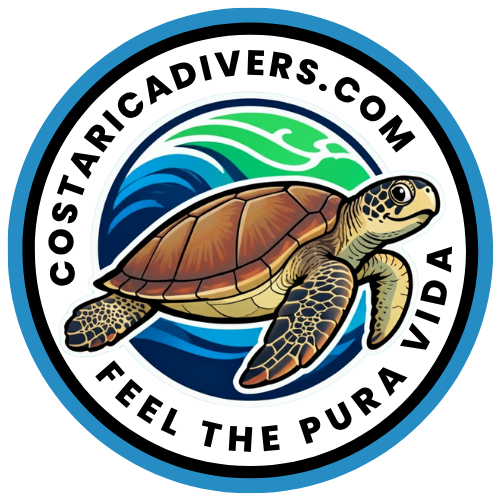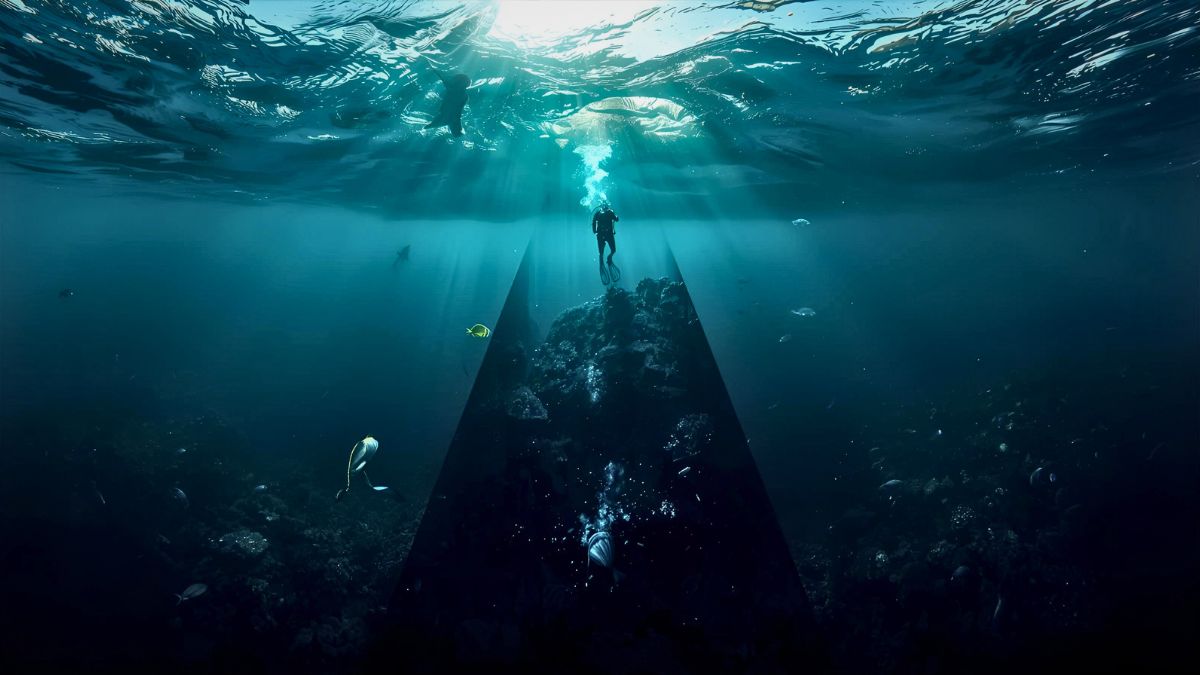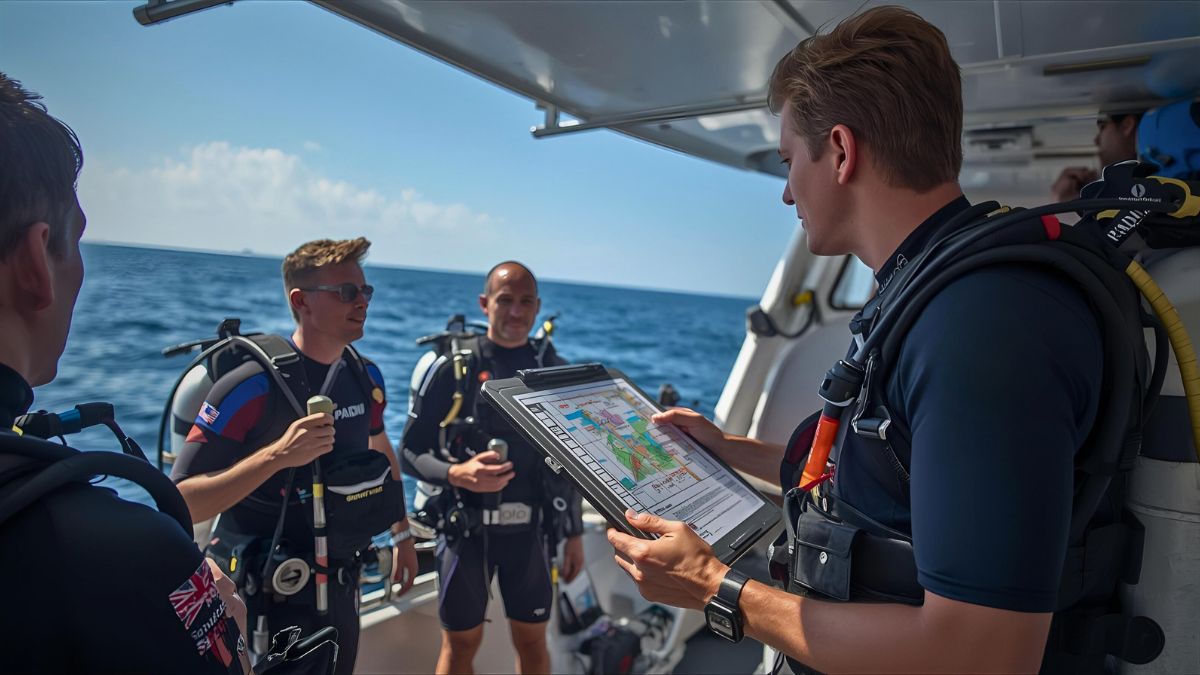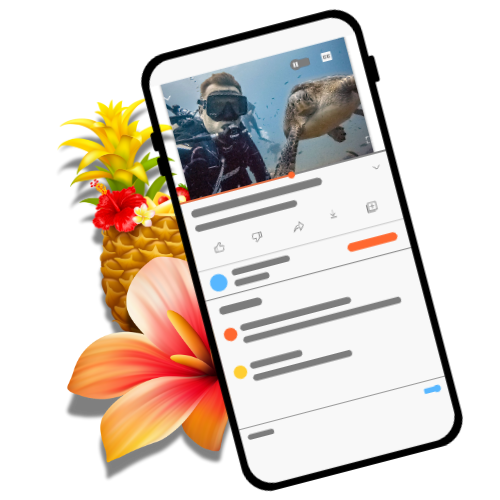Dreaming of exploring underwater worlds but can’t swim? You’re not alone. Many people who can’t swim wonder if scuba diving is out of reach for them. The good news? It’s more possible than you might think, but there are important limitations you need to understand.
As a scuba diving instructor, I’ve worked with countless students who came to me with little to no swimming ability. Some were terrified of water. Others had never put their face underwater. Yet many of them went on to experience the magic of diving, and some even became certified divers.
Today, I’ll explain exactly what’s possible for non-swimmers, what challenges you’ll face, and how to safely start your underwater journey.
The Short Answer: Yes, But With Important Limitations
Can non-swimmers learn to scuba dive? Yes, but with specific limitations.
Non-swimmers CAN:
- Try scuba diving through Discover Scuba Diving experiences
- Experience breathing underwater in shallow, controlled environments
- Explore the underwater world with an instructor by their side
Non-swimmers CANNOT:
- Get fully certified without basic swimming skills
- Pass the mandatory swim test required for Open Water certification
- Dive independently without mastering water confidence
The key difference is between trying diving and getting certified. If you want to experience scuba diving once or twice, you can do that without knowing how to swim. But if you want to become a certified diver who can explore dive sites around the world, you’ll need to develop basic swimming skills first.
Did you know? Many people who couldn’t swim and were afraid of water have told me that scuba diving became their gateway to learning to swim. The experience was so incredible that it motivated them to overcome their fears and develop water skills they never thought possible.
Understanding How Scuba Diving Differs from Swimming
Most non-swimmers are surprised to learn that scuba diving is very different from swimming. When you swim, you’re trying to stay above the water. When you scuba dive, you’re exploring beneath it. This fundamental difference means that traditional swimming skills don’t translate directly to diving.
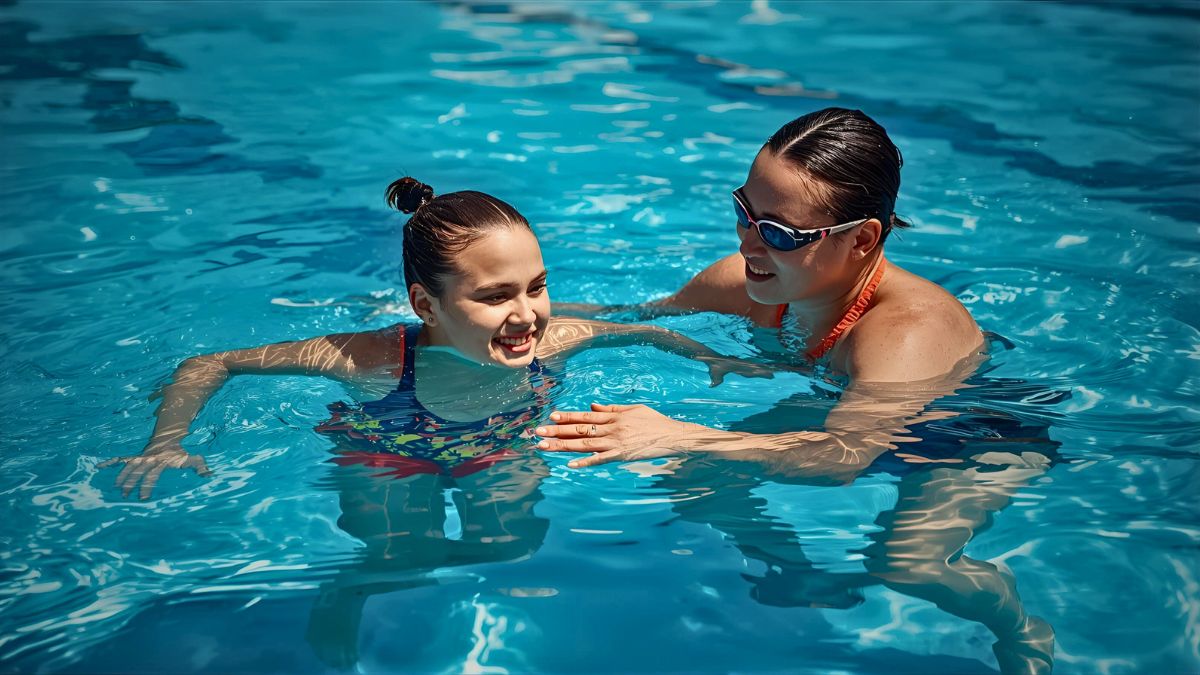
How Equipment Helps Non-Swimmers
Underwater, your scuba equipment does most of the work:
Fins provide propulsion without swimming strokes. Your fins do all the work with simple leg kicks, and you keep your arms relaxed at your sides.
Your BCD keeps you floating. This inflatable jacket allows you to achieve neutral buoyancy, meaning you neither sink nor float upward. You can hover effortlessly in the water without any swimming effort.
Your wetsuit adds buoyancy. The neoprene material naturally wants to float, helping keep you near the surface when needed.
You breathe normally through your regulator. No need to hold your breath or come up for air. You simply breathe in and out through your mouth.
This is why many non-swimmers find that once they’re underwater with scuba gear, they feel more comfortable than they ever did trying to swim at the surface.

Can Non-Swimmers Try Scuba Diving? (Discover Scuba)
If you can’t swim but want to experience scuba diving, Discover Scuba Diving is designed specifically for you.
What Is Discover Scuba Diving?
Discover Scuba Diving is a beginner-friendly program that allows complete novices, including non-swimmers, to experience diving in a safe, controlled environment. There’s no swim test required. You don’t need any certification. You just show up, learn the basics, and dive with an instructor who stays by your side the entire time.
The experience typically lasts 2-4 hours and includes:
- A brief orientation to scuba equipment and safety
- Practice breathing underwater in shallow water (pool or calm beach)
- A short open water dive, usually to depths of 5-12 meters
- Constant supervision by a professional instructor
Is Discover Scuba Safe for Non-Swimmers?
Yes, with proper supervision and appropriate conditions. The program has strict safety protocols including maximum depth limits, instructor-to-student ratios of 1:4 (often 1:2 for nervous beginners), and skill practice in shallow water first.
However, I must be honest: some non-swimmers struggle. The biggest challenge isn’t the diving itself, it’s the fear of deep water. About 20-30% of non-swimmers who attempt Discover Scuba don’t complete it due to panic or discomfort.
That’s why choosing the right diving instructor is absolutely critical. An experienced instructor who specializes in nervous beginners can make all the difference.
Getting Certified: The PADI Open Water Course
If you want to become a certified diver, you’ll need to complete the PADI Open Water Diver course. This is where non-swimmers face a mandatory requirement: you must pass a swim test.
Swimming Requirements for PADI Certification
To earn your Open Water certification, you must complete ONE of the following:
Option 1: Swim 200 meters continuously without any aids
- You can use any swimming stroke (even doggy paddle)
- There is NO time limit
- You can rest by floating, but cannot stop and stand or hold the pool edge
Option 2: Swim 300 meters with mask, scuba fins, and snorkel
- Often easier for weak swimmers
- Fins provide propulsion
- You breathe through the snorkel the entire time
Additionally: Tread water or float for 10 minutes in deep water without any aids
These requirements are mandatory with no exceptions.
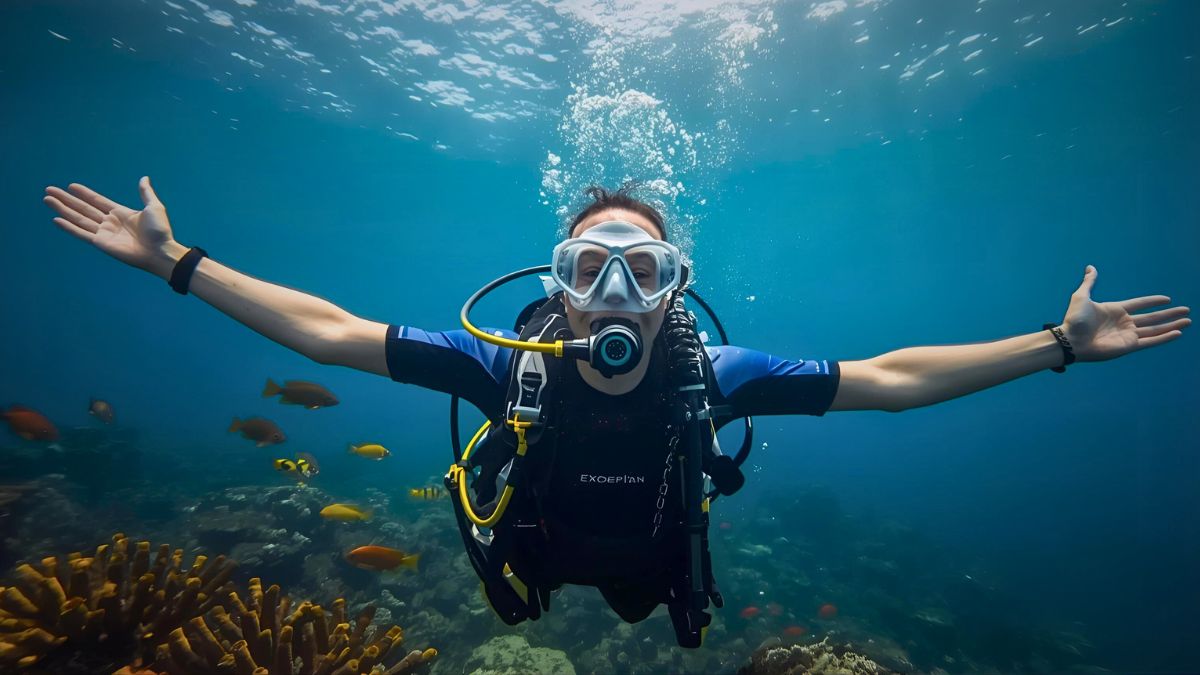
Why Swimming Skills Are Required
You might wonder: “If scuba equipment helps me so much, why do I need to swim?” The answer is safety.
Imagine your BCD malfunctions at the surface, or you’re waiting for the dive boat in choppy water. In these situations, you need basic water skills to keep yourself afloat. Most diving emergencies don’t happen underwater, they happen at the surface before or after a dive.
Additionally, water confidence is essential for learning the 25 underwater skills required in the course. Students who are comfortable in water learn faster, stay calmer, and enjoy the experience more.
The Swim Test: What You Need to Know
What I tell my nervous students is simple:
It’s about comfort, not speed. I’ve had students take 30-40 minutes to complete the 200-meter swim. As long as you keep moving and don’t grab the wall, you’re fine.
Any stroke is acceptable. Breaststroke, sidestroke, backstroke, doggy paddle, if it gets you across the pool, it counts.
The 300-meter option with fins is usually easier. If you’re a weak swimmer, I strongly recommend this option.
The 10-minute float is easier than it sounds. Most people can float on their backs with minimal effort. Gentle hand and feet movements are allowed.
Building Water Confidence as a Non-Swimmer
If you want to become a certified diver but currently can’t swim, start building water confidence now, before you book your course.
How to Build Water Confidence
Start in shallow water where you can stand. Practice being in the water, moving around, and getting comfortable with the sensation.
Practice putting your face in the water using goggles or a dive mask. Start with just a few seconds, then gradually increase.
Learn to float on your back. Spread your arms and legs like a starfish, lean your head back, and let your lungs keep you up. This skill alone will help you pass the 10-minute float test.
Practice breathing through a snorkel in shallow water. Get comfortable breathing only through your mouth while your face is down.
Learn to tread water using gentle sculling motions with your hands and a bicycle kick with your legs.
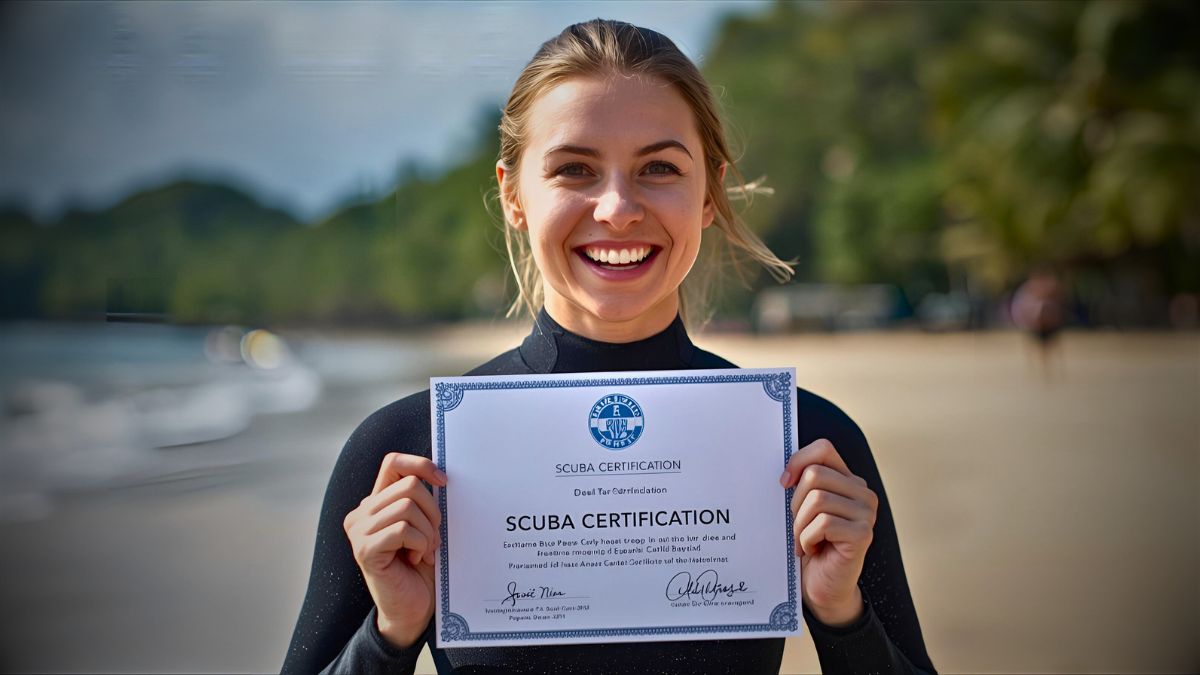
Swimming Lessons: A Smart Investment
With just 2-3 weeks of swimming lessons, most adults can develop enough basic swimming ability to pass the PADI swim test. You don’t need to become an Olympic swimmer, just comfortable enough in water to handle the requirements.
Swimming is also a valuable life skill that extends far beyond diving. It’s excellent low-impact exercise and opens up many water activities.
I always tell my non-swimming students: invest in a few swimming lessons before you book your Open Water course. It will make your diving experience so much better.
Fun fact: Studies show that adults who overcome a fear of water through structured lessons experience a significant boost in overall self-confidence that extends to other areas of their lives. Learning to swim as an adult is a powerful personal achievement.
Overcoming Challenges as a Non-Swimmer
Understanding the challenges in advance helps you prepare mentally and emotionally.
Common Fears and How to Address Them
Fear of deep water: Start in confined water where you can stand. Progress gradually. Remember that with your BCD inflated, you can’t sink even in deep water.
Fear of breathing underwater: Practice first with a snorkel in shallow water, then progress to a regulator in a pool. Take as much time as you need.
Fear of panic: The best antidote to panic is preparation. The more you practice skills in a controlled environment, the calmer you’ll be.
Choosing the Right Diving Instructor
For non-swimmers, the instructor makes or breaks the experience. Look for instructors who:
- Have specific experience training non-swimmers and nervous beginners
- Offer personalized, one-on-one instruction rather than large group classes
- Show patience and empathy
- Provide extra pool time if needed
- Have excellent reviews from beginner students
Choosing Beginner-Friendly Dive Sites
Ideal conditions for non-swimmers include calm, clear water with minimal current, warm temperatures, and shallow depths initially. Costa Rica offers excellent beginner-friendly dive sites with these exact conditions.
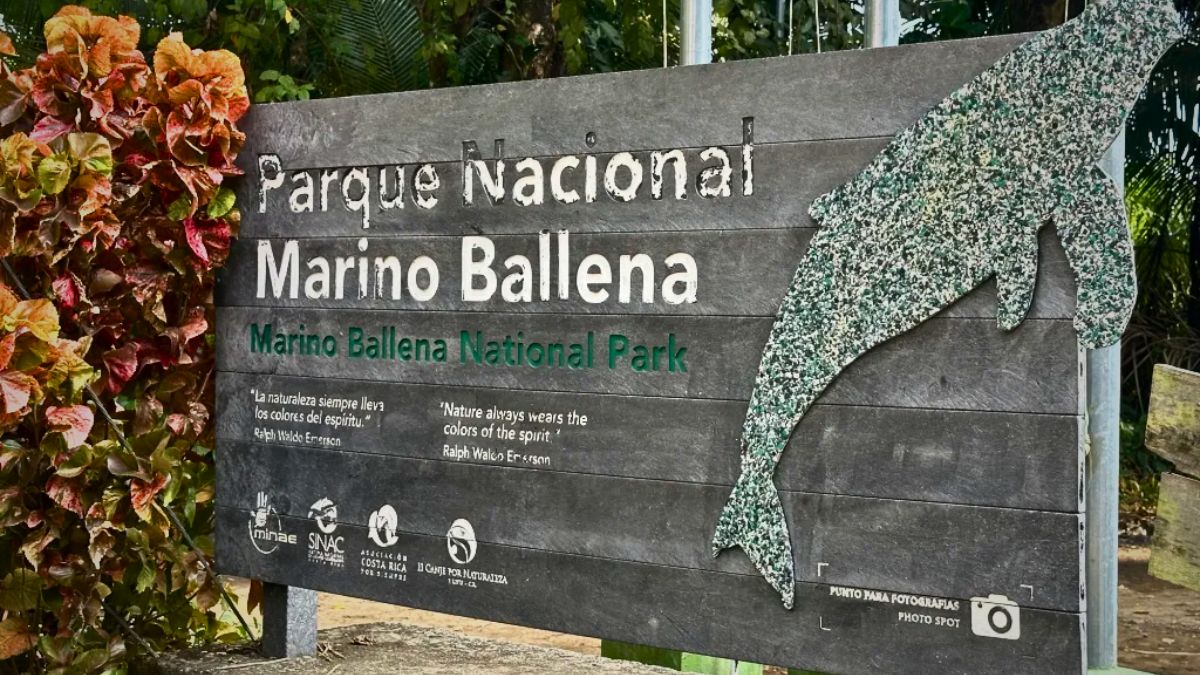
Step-by-Step Path from Non-Swimmer to Certified Diver
If you’re a non-swimmer who wants to become a certified diver, here’s the path I recommend:
- Try Discover Scuba Diving to see if you enjoy diving
- Take swimming lessons (2-4 weeks recommended)
- Practice basic water skills (floating, treading water, breathing through snorkel)
- Pass the PADI swim test (200m or 300m with gear)
- Enroll in Open Water course with an experienced instructor
- Complete confined water training in pool or calm, shallow water
- Graduate to open water dives (4 dives required)
- Get certified and explore the underwater world
This journey might take a few months, but each step builds on the previous one. There’s no rush, progress at your own pace.
Did you know? Many professional diving instructors started as non-swimmers or had significant water fears. The underwater world captured their hearts so completely that they not only learned to swim but dedicated their careers to sharing diving with others.
Frequently Asked Questions
Can I try scuba diving if I can’t swim at all?
Yes. Discover Scuba Diving programs allow non-swimmers to experience diving in shallow, controlled environments with constant instructor supervision. No swim test is required for this introductory experience.
What are the exact swimming requirements for PADI certification?
You must complete either a 200-meter continuous swim (any stroke, no time limit) OR a 300-meter swim with mask, fins, and snorkel. You must also float or tread water for 10 minutes in deep water. These are mandatory requirements.
How long does it take to learn enough swimming for certification?
Most adults can develop sufficient basic swimming skills in 2-4 weeks with regular swimming lessons (2-3 sessions per week). You don’t need to become an expert swimmer, just comfortable enough to pass the swim test.
What happens if I panic during a dive?
Your instructor is trained to handle panic situations. In shallow water, you can simply stand up. In deeper water, your instructor will help you ascend safely. During Discover Scuba, the instructor maintains arm’s reach distance at all times.
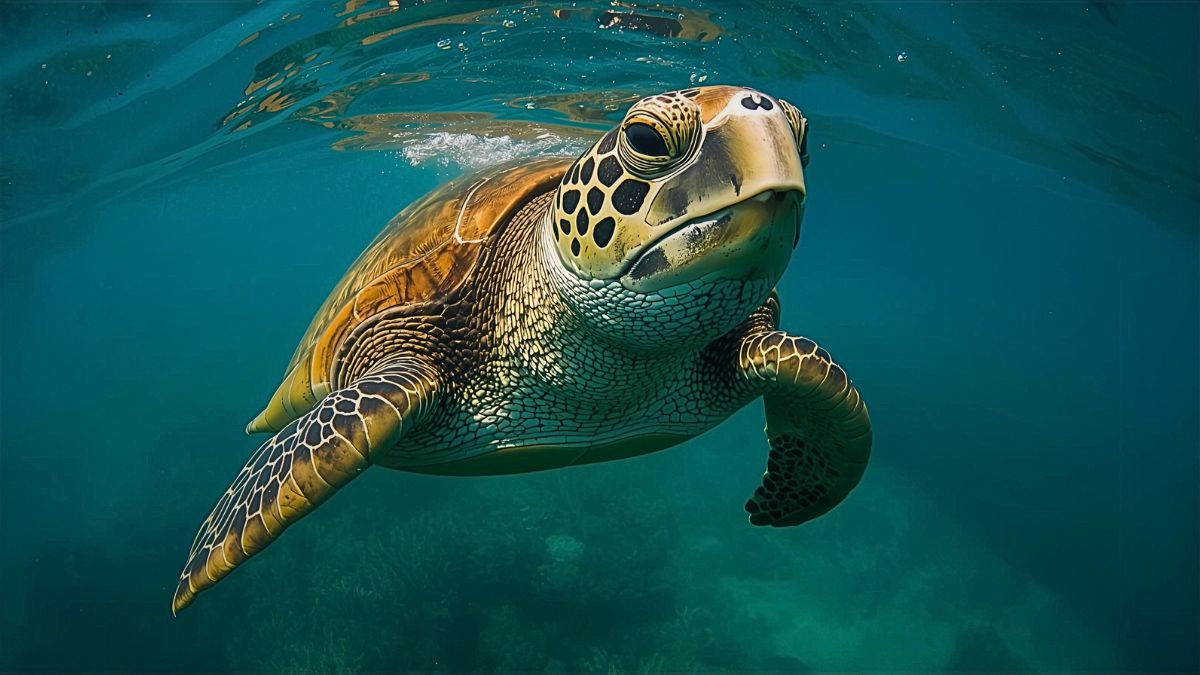
Can I get certified without passing the swim test?
No. The swim test is a universal requirement across all major diving organizations. However, you can participate in Discover Scuba Diving experiences without any swim test.
What equipment helps non-swimmers the most?
The BCD (buoyancy control device) is most helpful, keeping you floating effortlessly at the surface. Fins are second most important, providing propulsion without swimming strokes. A properly fitted wetsuit also adds buoyancy.
Should I take swimming lessons before or after trying Discover Scuba?
I recommend trying Discover Scuba first to see if you enjoy diving. If the experience excites you, then commit to swimming lessons so you can pursue full certification.
Final Thoughts
Can non-swimmers learn to scuba dive? Yes, with understanding, preparation, and realistic expectations.
If you can’t swim but want to experience the underwater world, start with Discover Scuba Diving. No swim test required. You’ll discover whether diving captivates you enough to pursue it further.
If you want full certification, commit to learning basic swimming skills first. With the right instructor, proper preparation, and calm dive conditions, many non-swimmers successfully become confident, certified divers.
Remember: diving is for everyone. I’ve taught children, elderly students, and people with disabilities. Your swimming ability doesn’t define whether you can dive, your determination does.
Ready to start? Our PADI-authorized dive center specializes in personalized instruction for nervous beginners and non-swimmers. Contact us today to discuss your path to diving. We’re here to help you overcome your fears and discover the magic beneath the waves.
Sources and References
This article is based on verified information from official diving organizations and training standards:
- PADI Open Water Diver course requirements and swim test standards
- SSI (Scuba Schools International): Training standards and water skills assessment
- DAN (Divers Alert Network): Diving safety protocols for beginners
- WRSTC (World Recreational Scuba Training Council): International diving standards
